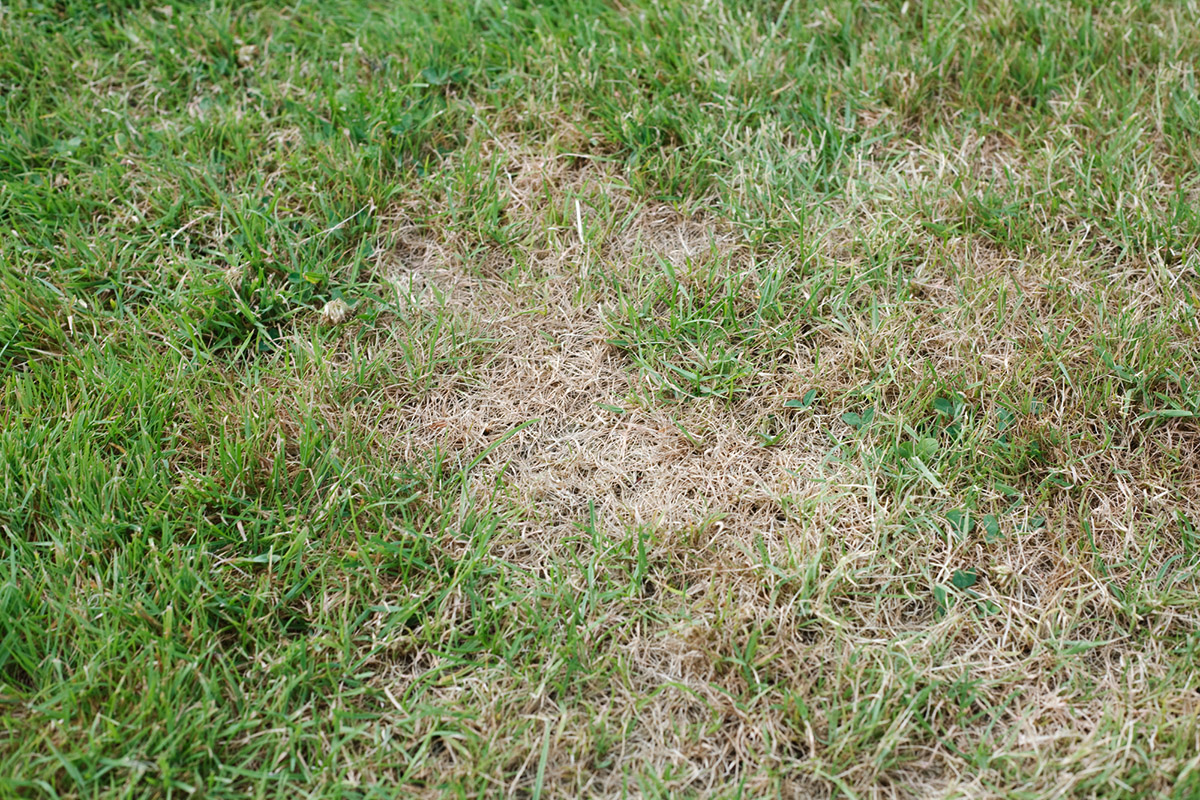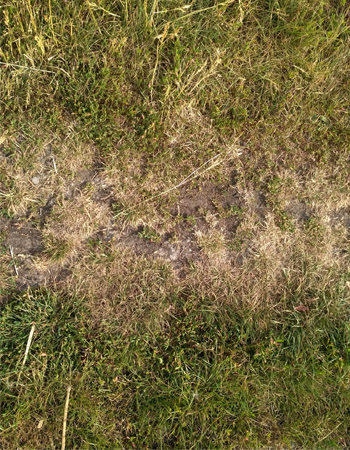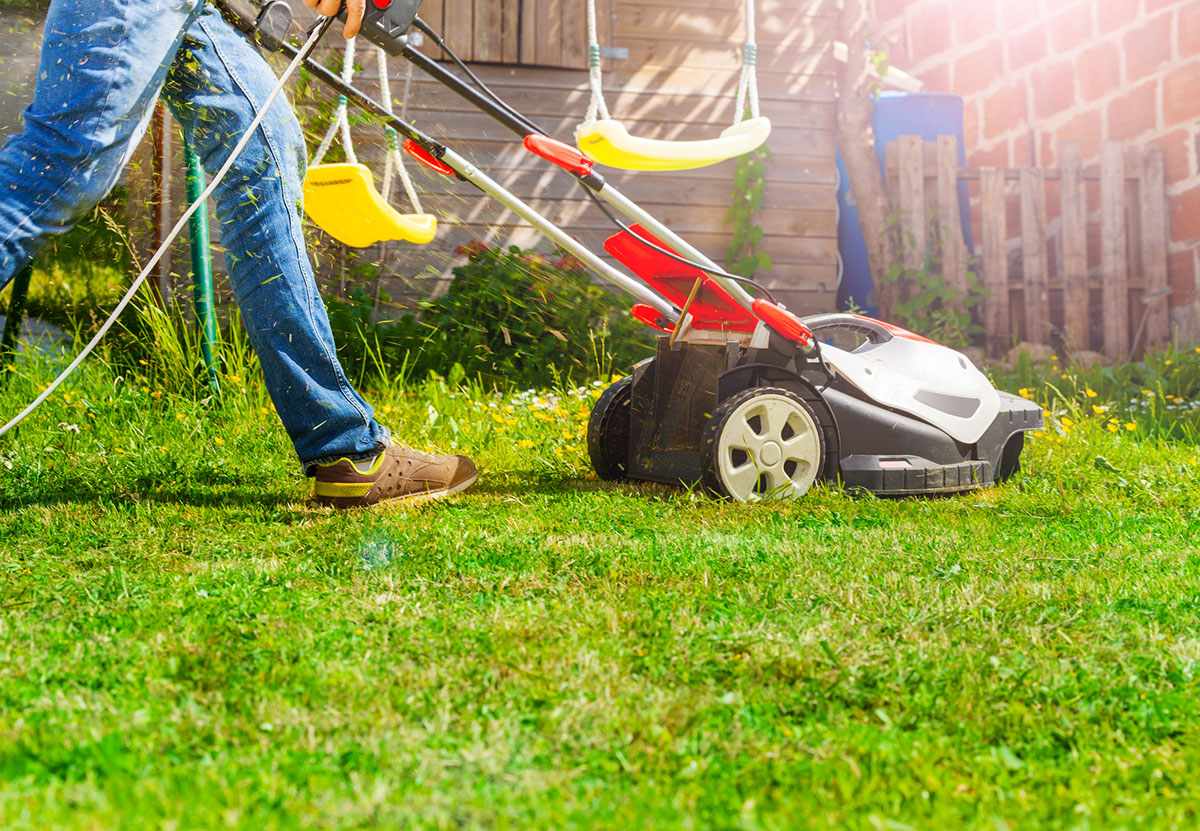

We may earn revenue from the products available on this page and participate in affiliate programs. Learn More ›
Q: I have dead grass popping up all over my lawn, and I’m not sure why. Am I going to have to replace it all, or can my dead grass be saved?
A: Growing grass can be a finicky process. There are certain species of grasses that grow better in some climates than others, for starters. The amount of sun, shade, water, fertilizer, foot traffic, and overall care are all factors that contribute to the health of a lawn.
There may be a few reasons why you have dead grass or that your lawn is dying. If you’re seeing small patches of dead grass, and you own a pet, it’s possible your pet’s bathroom trips are the problem. Larger areas of dead grass can be caused by too much or too little watering, poor nutrients, or overfertilizing. Before you assume the worst, it’s possible that your brown grass isn’t actually dead, but just dormant. If this is the case, there are ways you can revive your lawn.

“Dead” grass may not really be dead.

What looks like dead grass may not actually be dead grass. For instance, some grass species are tolerant of drought conditions in cooler weather for up to six weeks; but in response to the lack of water, they simply go into hibernation and turn brown. However, most grass varieties are susceptible to dying in extremely dry conditions or in hot weather or strong sunlight.
You can check to see if your grass is dead by pulling out a small handful of the brown blades. If they all come out easily, the grass is likely dead and will need to be removed and replaced. If the blades stay firmly in place or require some effort to extract from the ground, the grass is likely just dormant and can be saved with some effort.
Water your grass if it’s not raining.
Grass needs water just like any living plant. It’s not uncommon to think that in a climate where there is occasional rainfall, the grass will be just fine. Typically, grass will need regular waterings if there is rainfall only a few times a month.
A lawn-care professional can help suggest a suitable watering program for your particular lawn based on the type of grass you have and the amount of sun and shade it receives. To revive stressed, brown grass, you may want to start watering your lawn more frequently, making sure it receives about an inch of water per week.

Mow your lawn and leave the freshly cut grass in place.
In some cases, “dead” grass can benefit from a fresh cut; you can try mowing the whole lawn and leaving a thin layer of the grass clippings behind. Grass can act as its own fertilizer since the blades already contain the nitrogen the roots need. The grass clippings left behind will slowly decompose and provide healthy nutrients to struggling roots. However, after leaving grass clippings behind, you may need to rake them out evenly across the lawn to avoid thick clumps that can block out needed sunlight.

Manually remove any new weeds that are growing, or use a noninvasive herbicide.
Weeds may be the culprit behind your dead or dormant brown grass, as they are nutrient hoarders that steal what the grass needs to grow. They take water, nutrients, and even some fertilizer away from grass roots, so it’s important to keep up with removal before weeds overwhelm the yard.
Aside from the usual weed-killer products, there are a few ways to rid your lawn of weeds. You can apply a pre-emergent herbicide or fertilizer that prevents spring weed growth, or you can use a weed-pulling tool to manually dig out weeds and their roots. Or, you can pour boiling water directly on a weed.

Aerate your lawn to allow air to reach the roots and boost your grass’s growth.
Grass roots also need oxygen to grow properly. Lawn aeration is a great way to help revive brown “dead” grass; poking holes in a lawn will grant the roots unencumbered access to oxygen. Professional lawn-care services may offer this service in the spring to help revive dormant winter grass in time for the summer.
Dethatching your lawn can be another way to increase the amount of oxygen flowing to your grass’s roots. If too much dead grass has been packed onto the roots over time, they may be suffocating and unable to grow healthy grass. Use a rake to pull out dead grass to within ¾ inch above the roots.
Top-dress the dead grass to provide additional nutrients and fertilize it.
Spreading a thin layer of compost on a lawn is a powerful way to immediately boost the overall soil content and nutrient density. As the compost layer is watered, the natural fertilizer will leach into the grass roots and provide a healthy growth spurt, especially if the ground has been aerated. You can talk with your lawn-care professional to find the right compost for your yard to revive any “dead” grass you may have and boost the overall health of your lawn.

